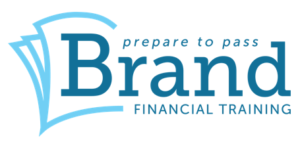Professional Paraplanner’s TDQ (Training, Development and Qualifications) series, is run in conjunction with key support providers, such as Brand Financial Training, and aims to test your knowledge of the financial services market, as part of your overall training goals and exam techniques.
The following questions, which can also be found in our December 2021 issue, relate to examinable Tax year 20/21, examinable by the CII until 31 August 2022.
QUESTIONS
1. How is the capital adequacy of an authorised firm assessed?
A. Risk identification and management processes
B. Monitoring the value of assets
C. Monitoring the firm’s liabilities
D. Monitoring the proportion of liquid assets over capital
2. Patrick has been advised by his financial adviser to use a tracker fund for his core holdings in order to:
A. meet short-term tactical objectives.
B. maintain the risk and return in line with market average.
C. achieve superior performance through active selection.
D. attempt to beat the benchmark.
3. A financial adviser has been asked to explain the potential capital gains tax (CGT) liabilities of the trustees regarding the assets of an interest in possession trust. She will explain that: Tick all that apply.
A. for those created after 22 March 2006, there is generally a CGT uplift on the death of the life tenant.
B. the trust will benefit from a standard rate band of £1,000 to offset against gains.
C. for those created before 22 March 2006, the trust assets are valued at the date of death of the life tenant.
D. most gains realised by trustees are charged at the rate of 20%.
4. Which of the following is true of woodworm?
A. Small holes indicate a woodworm infection.
B. Woodworm refers to a mature deathwatch beetle.
C. It is the larvae that damages the timber.
D. It can be treated by ventilation.
5. Which of the following was introduced for occupational defined contribution pension schemes using master trusts as part of the Pension Schemes Act 2017?
A. Authorised schemes must submit monthly accounts to The Pensions Regulator
B. Schemes must submit monthly supervisory returns
C. Financial Conduct Authority powers to withdraw authorisation from a failing scheme
D. To be authorised those involved in the scheme must be ‘fit and proper’
6. Susan has a mortgage payment protection insurance policy. If she makes a claim on becoming unemployed, the very maximum amount of time for which benefits will be paid is usually:
A. 9 months
B. 12 months
C. 18 months
D. 24 months
7. A key concept of MPT is the efficient frontier, which describes the relationship between the return that can be expected from a portfolio given its risk. Which of the following is regarded as a limitation of the Efficient Frontier Model?
A. It assumes standard deviation is the correct measure of risk.
B. It assumes that the underlying portfolios are actively managed.
C. It does not take account of risk.
D. It does not take account of portfolio returns
8. A bonus issue of shares is usually used to:
A. attract new investors.
B. reduce the share price.
C. pay dividends rather than use cash.
D. to reward existing shareholders.
9. How does the FCA/PRA regulate pure protection contracts for long term care?
A. In the same way as “designated investments”
B. Similarly to general insurance contracts
C. In the same way as Income Replacement cover
D. Similarly to mortgage contracts
10. What might be the immediate adverse effects of releasing equity to produce additional income for an 80-year-old client?
A. Loss of part of State Pension
B. Additional income tax, loss of means-tested state benefits
C. Loss of means-tested state benefits only
D. Additional income tax only































